Understanding Earth's Oceans and Their Dynamics
1/22
There's no tags or description
Looks like no tags are added yet.
Name | Mastery | Learn | Test | Matching | Spaced |
|---|
No study sessions yet.
23 Terms
Pacific Ocean
Largest ocean, covering more area than others.
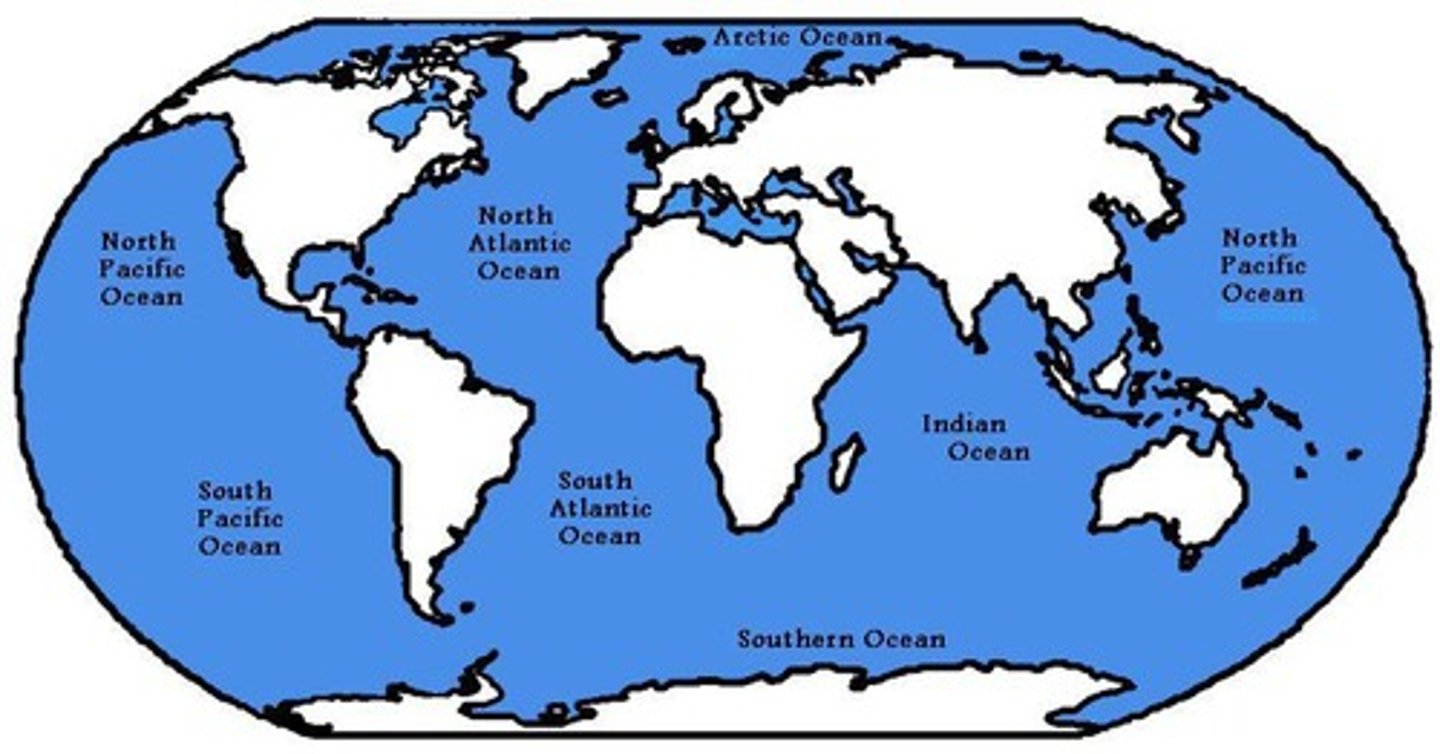
Atlantic Ocean
Second largest ocean, separates Americas from Europe.
Indian Ocean
Third largest ocean, located between Africa and Asia.
Southern Ocean
Encircles Antarctica, fourth largest ocean.
Arctic Ocean
Smallest ocean, located around the North Pole.
Ocean Coverage
Over 70% of Earth's surface is ocean.
Water Distribution
97% of Earth's water is in oceans.
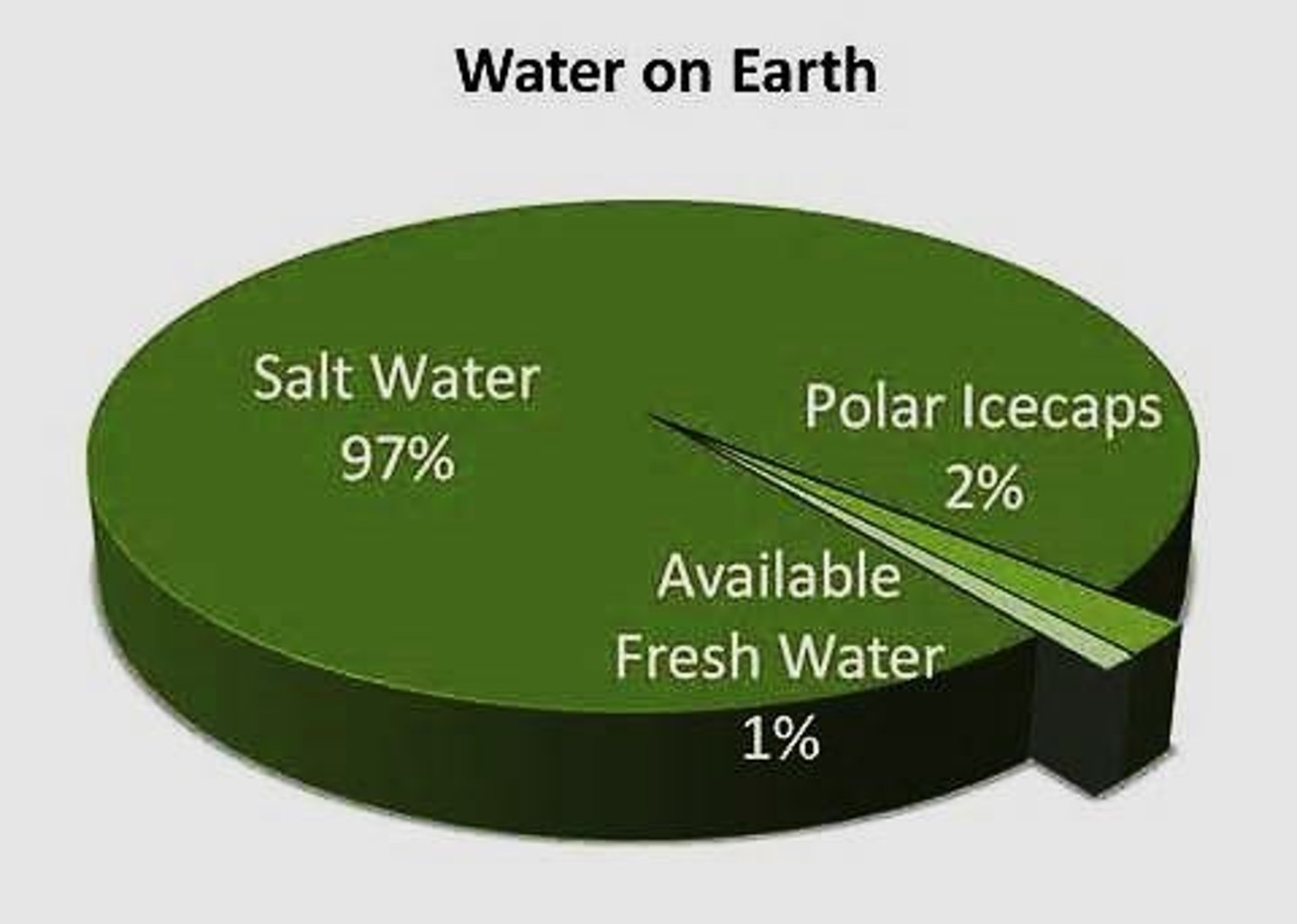
Freshwater Sources
1% of Earth's water is freshwater.
Ocean Water Composition
Mainly H2O, with NaCl and Cl as salts.
Salinity
Measure of dissolved salt in water, in ppt.
Average Ocean Salinity
35 ppt for seawater, 0.5 ppt for rivers.
Coriolis Effect
Deflection of air and water due to Earth's rotation.
Surface Ocean Currents
Water flow driven by winds, affecting climate.
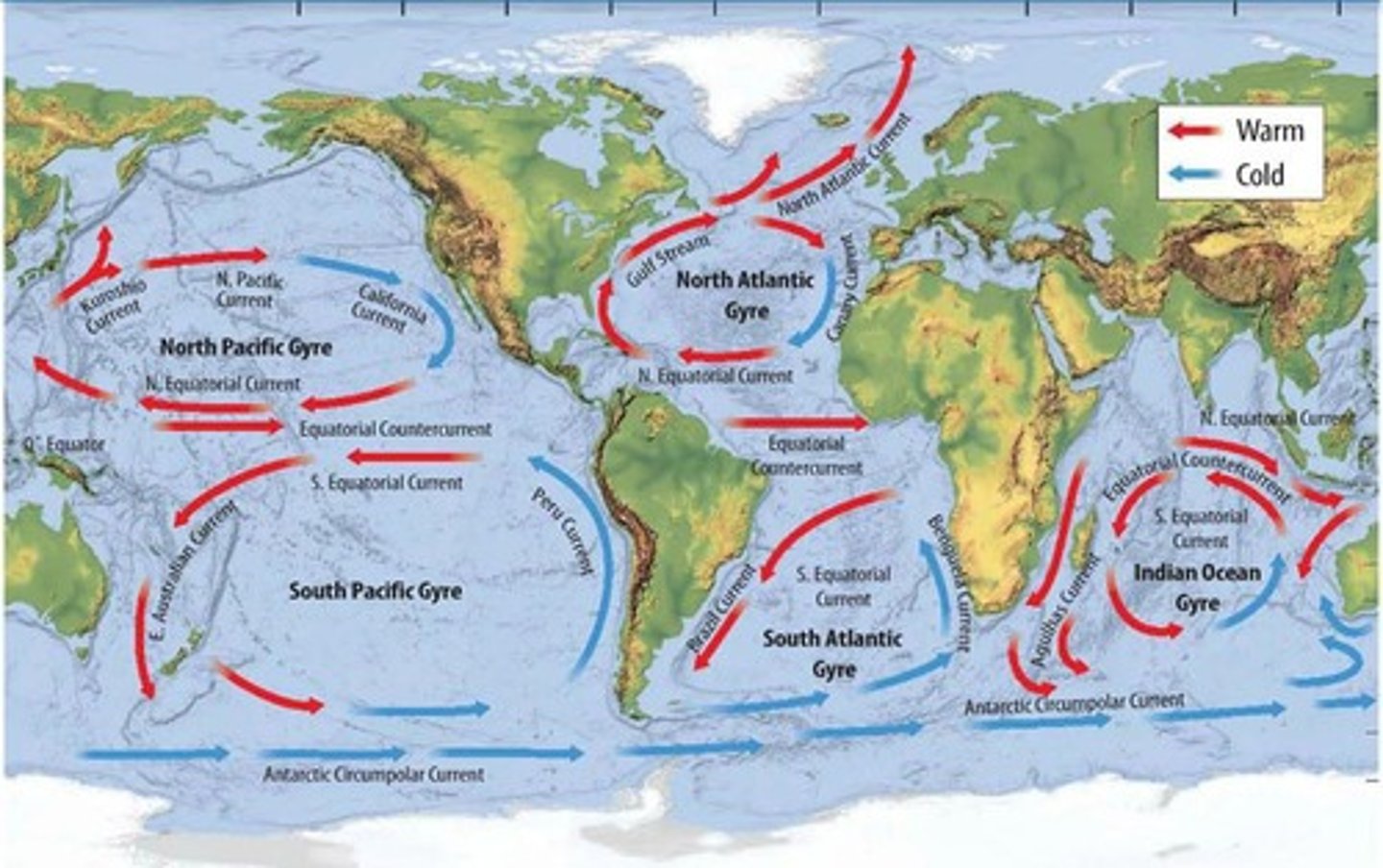
Gulf Stream
Warm Atlantic current, influences European climate.
Temperature and Density
Colder water is denser than warmer water.
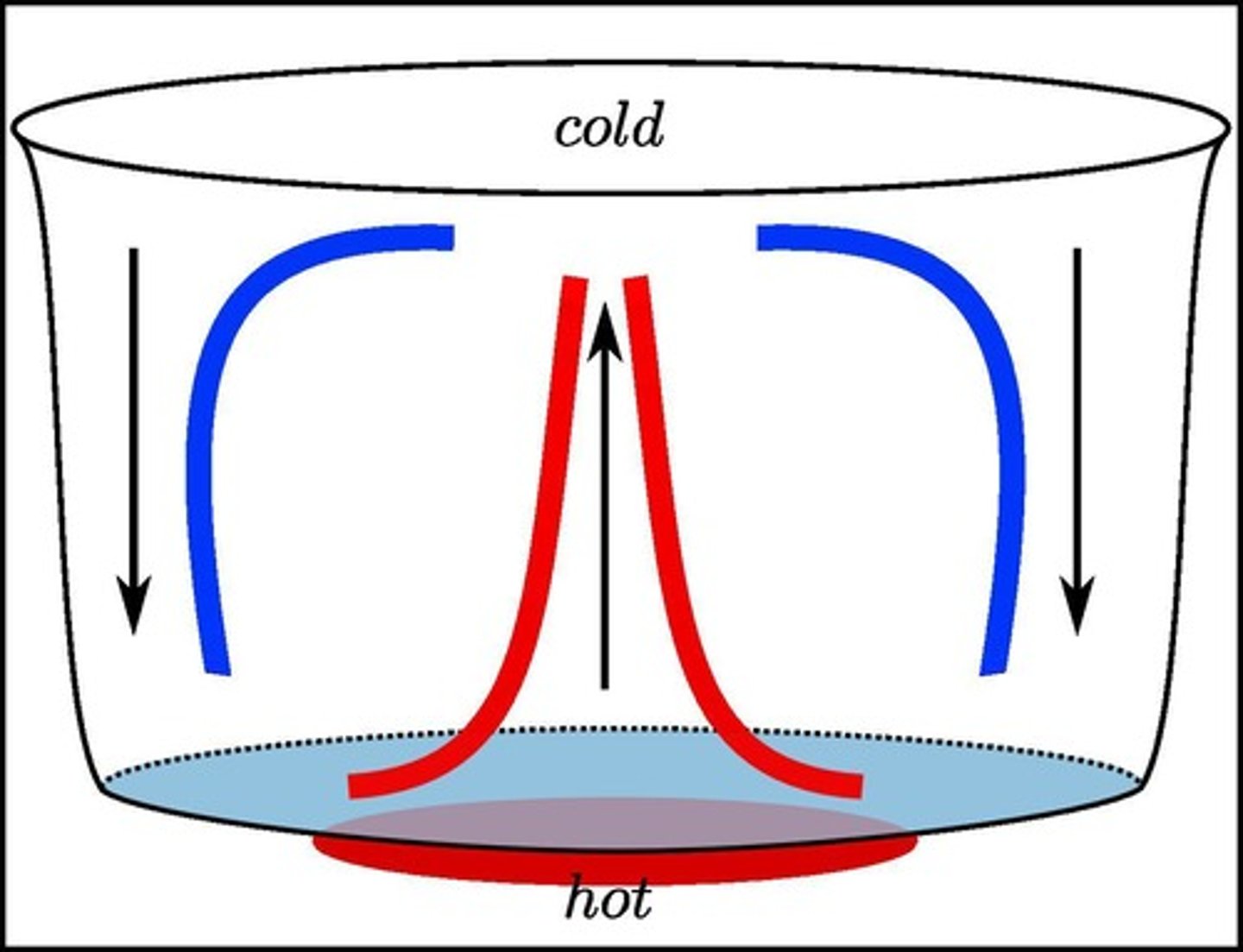
Deep Ocean Currents
Driven by density differences, nutrient transport.
Tides
Caused by moon's gravitational pull on oceans.
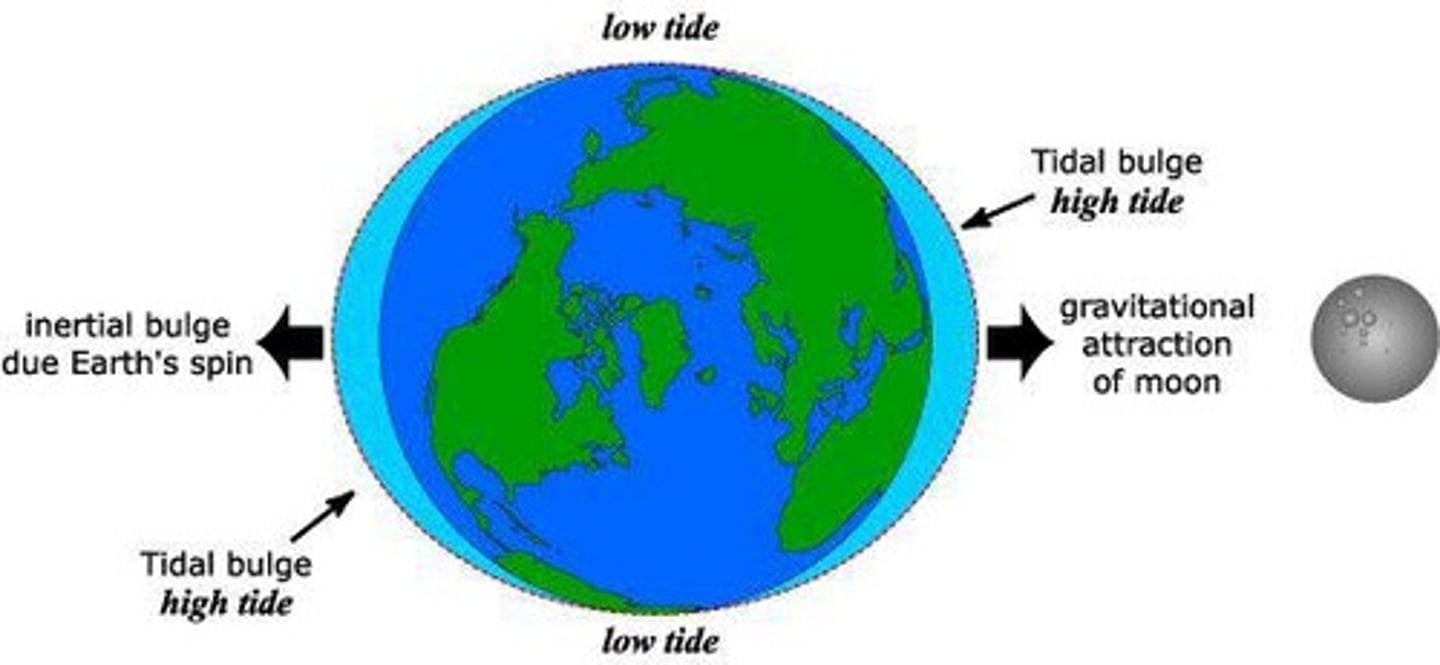
Heat Distribution
Oceans distribute heat globally, regulating climate.
Convection Currents
Movement of water due to temperature differences.
High Salinity Effects
High salinity increases water density, easier to float.
Surface Winds
Primary driver of surface ocean currents.
Ocean's Conveyor Belt
Deep currents move heat, nutrients, and oxygen.
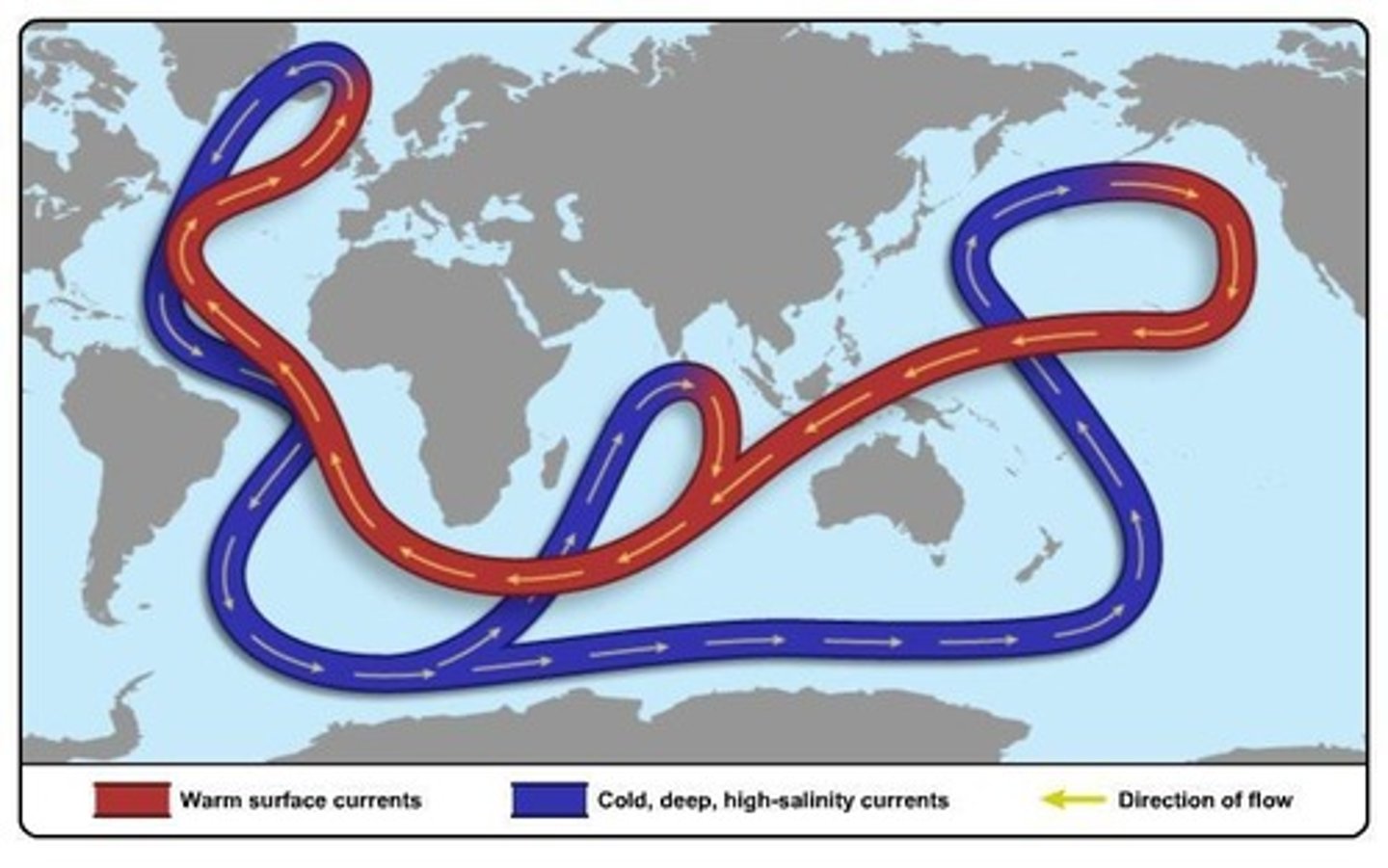
Extreme Temperature Effects
Without currents, land temperatures would be extreme.